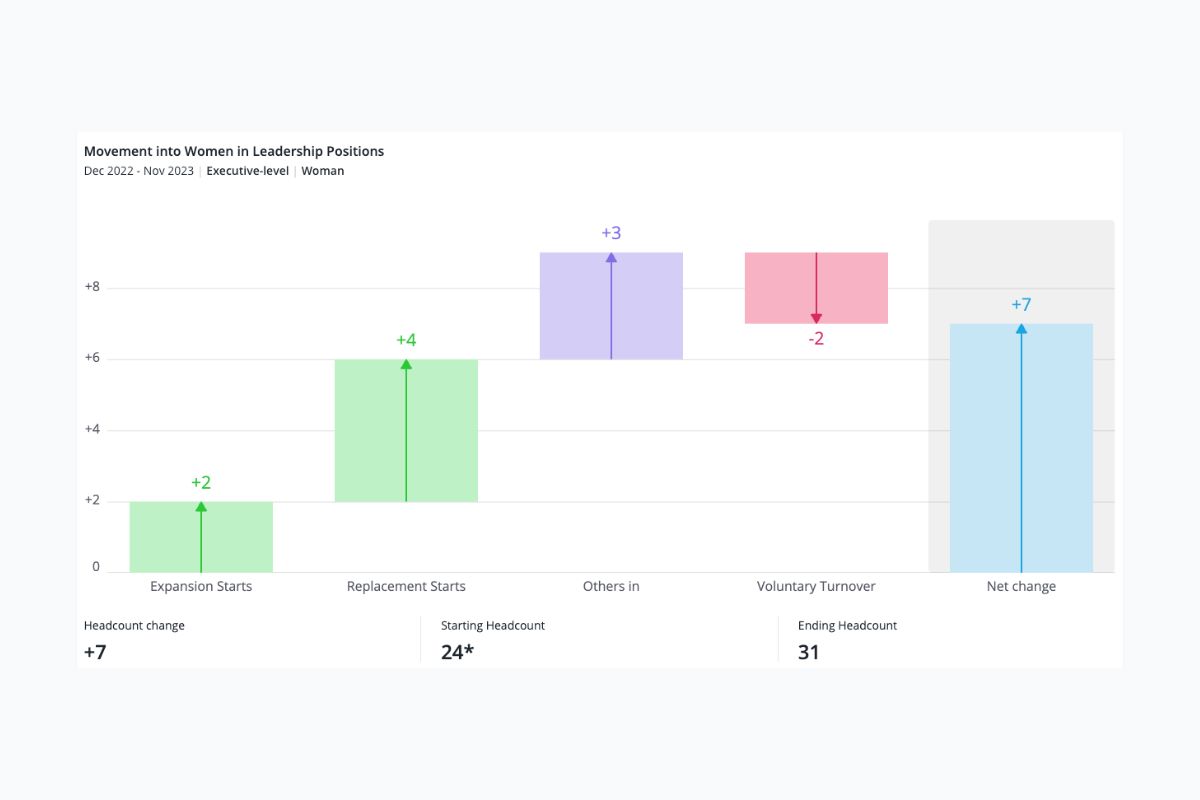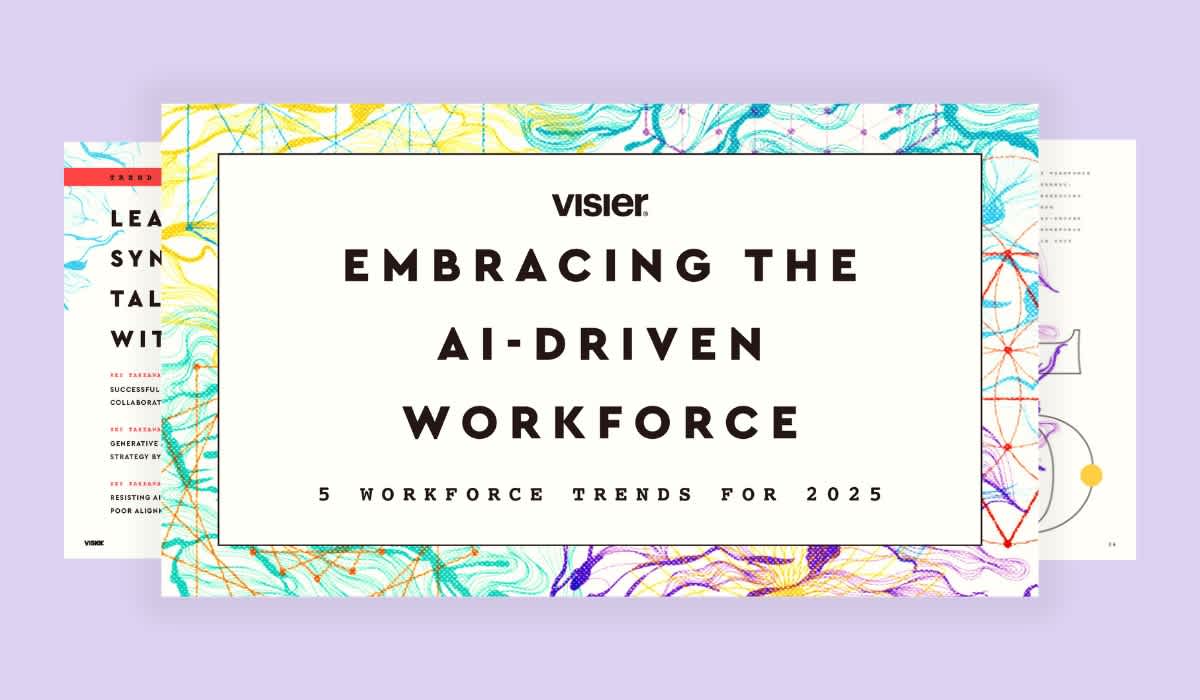Why Employee Data Management is Crucial for Effective ESG Reporting
As mandatory disclosures on human capital management continue to increase, organizations need to ensure their people data is available, accurate, and accessible.

Employee data is fundamentally unique and different from other types of business data, such as financial or accounting data. Employee data, or people data, has many characteristics that make it different—and more challenging—to analyze and standardize than most other types of business data, such as sales, finance, or operational data.
Data-driven HR leaders and people managers need the ability to access critical people insights to make strategic workforce decisions. The uniqueness of employee data requires the right technology to generate these insights for making daily decisions and to meet external disclosure requirements like the Corporate Sustainability Reporting Directive (CSRD) and environmental, social, and governance (ESG) reporting.
Here, we explain the unique nature of people data, how it differs from other types of business data, and the importance of balancing employee data management challenges with ESG reporting requirements.

People data is complex, with a lot of context
People data is profoundly different from other types of business data, like accounting data, commonly used for corporate reporting. People data is the only type of business data with the concept of a journey—a continuous series of events like the employee’s start date, promotions, and pay cycle events— in the lifecycle of an employee. This makes standardizing and managing employee data especially complex.
With accounting data, a dollar in one account is the same as any other one. People are not interchangeable or fungible. If you are tracking a financial metric such as Gross Margin, the “identity” of individual dollars doesn’t impact the metric or report outcome since every dollar holds equal value.
However, specific characteristics matter greatly when you track a metric like the Ratio of Women in Leadership. For example, it makes a big difference whether those women were promoted from within or hired externally, or whether women have to wait longer—and by how much—in their careers to reach a leadership position than men. This context influences the metric outcome, how you explain it, and what you decide to do about it in the future.

People have so much context around them. For example, you can add various layers to this analysis, such as if these female leaders are minorities, their work experience and tenure, and the characteristics of their managers, teammates, and subordinates. All of this context is critical to understanding the workforce and the impact they have on the business.
Balancing employee data management challenges with ESG reporting requirements
People data management is critical for effective, accurate corporate reporting. To report on employee data, you must uniquely identify each person, collect contextual information, and piece together each person’s unique history and journey. However, uniquely identifying individuals and surrounding them with all this context poses additional security, privacy, and data governance risks. Effectively managing people data requires specialized procedures, skills, and tools.
Personal data is the subject of many regulations, from the Health Insurance Portability and Accountability Act (HIPAA) to the California Consumer Privacy Act (CCPA) to the EU General Data Protection Regulation (GDPR). For example, under the GDPR people have the “right to be forgotten” from corporate datasets. If a former Vice President in your organization requests to be removed from your data, you must comply. However, certain reporting disclosures like CSRD require year-over-year comparisons, so you still need to be able to account for this individual’s role during their tenure. You need to be able to manage the request without compromising the integrity of HR metrics, like the example of leadership diversity metrics above.

Another unique challenge is managing access to people data. HR leaders, people managers, and other key stakeholders need immediate and seamless access to the data required for them to make strategic decisions and effectively manage the organization’s human resources. With the sensitive nature of people data, each leader must have the right permissions specific to their role. A people analytics solution and a robust security model are crucial for enabling HR leaders with data and insights to accurately and thoroughly prepare corporate reporting disclosures.
Visier’s security posture ensures compliance with data protection policies (GDPR, PIPEDA, CCPA), international data transfer standards (EU-U.S. and Swiss-U.S. Privacy Shield Frameworks, SCCs), and security standards (SOC 2 & 3 compliance, CSA Star Level 1). Visier’s role-based security model provides a high level of granularity to define the appropriate access without being limited to an all-or-nothing approach. Role-based permissions allow you to define access to populations, data attributes, content packages, and capabilities to ensure the right people have access to the right data and content, even as roles change.
People analytics deliver critical insights securely
Organizations that use people analytics are better prepared to access the people data required for ESG and CSRD disclosures and can glean critical insights on nuanced metrics relating to employee training and development, skills, performance, and talent mobility.
With people analytics, HR leaders can access the necessary data based on their role to provide instant insight into advanced metrics like skills acquired, gender distribution by job tier, the average compensation ratio, and the drivers of resignation rate to meet corporate reporting requirements and drive the strategic narrative.
Visier People® Workforce CSRD consolidates required workforce disclosures into a single solution, allowing HR leaders to quickly measure key ESG metrics, drill into specific business units and locations, and glean the insights necessary to explain the what, how, and why behind each.

The latest on HR's role in ESG and CSRD reporting
The Corporate Sustainability Responsibility Directive (CSRD) has been signed into law, and EU companies must urgently get their people data ready. Here's what you need to know.
Mandatory human capital reporting continues to grow globally. Learn about HR's role in the process and how you can begin to prepare for 2024's CSRD and ESG reporting requirements.
The EU CSRD Own Workforce standards elevate the importance of people data in the corporate world, introducing a set of mandatory reporting requirements and increasing HR's strategic impact on the business.


